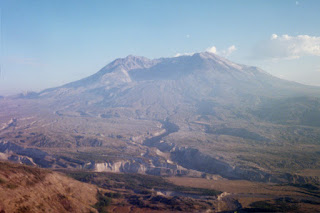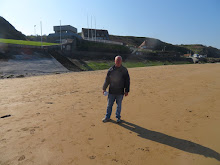On the sixth day of my trip to the northwest last month, after seeing Crater Lake on the fifth day, I decided to return to Washington and visit Mount St. Helens. That mountain blew its top (actually its north lateral side) in 1980 with devastating results (over 50 deaths).
It was quite a sight, a mountain with a huge piece missing. The area around its base, the lava field, looked like a moonscape, even though it had been thirty-two years since the event and a lot of growing had been going on over that time.
I hiked a 2-mile trail on the next ridge over (to the north). There were blast-sheared tree stumps littered all around on the hillside, and although the area had been harvested for the downed pine trees, there were stands of downed trees around, all pointing the same way, away from the blast.
When the volcano blew its top, after a few months of local earthquakes or tremors, bulging sides and venting gases, the forces boiled out of the mountain at 300 mph and instantly changed the entire landscape for miles. The actual lava flow was slower but inexorable, and speedy enough.
Subscribe to:
Post Comments (Atom)





No comments:
Post a Comment